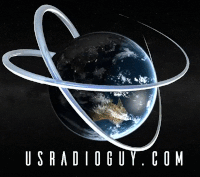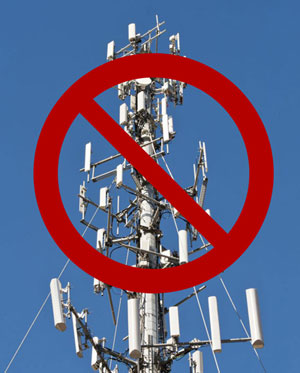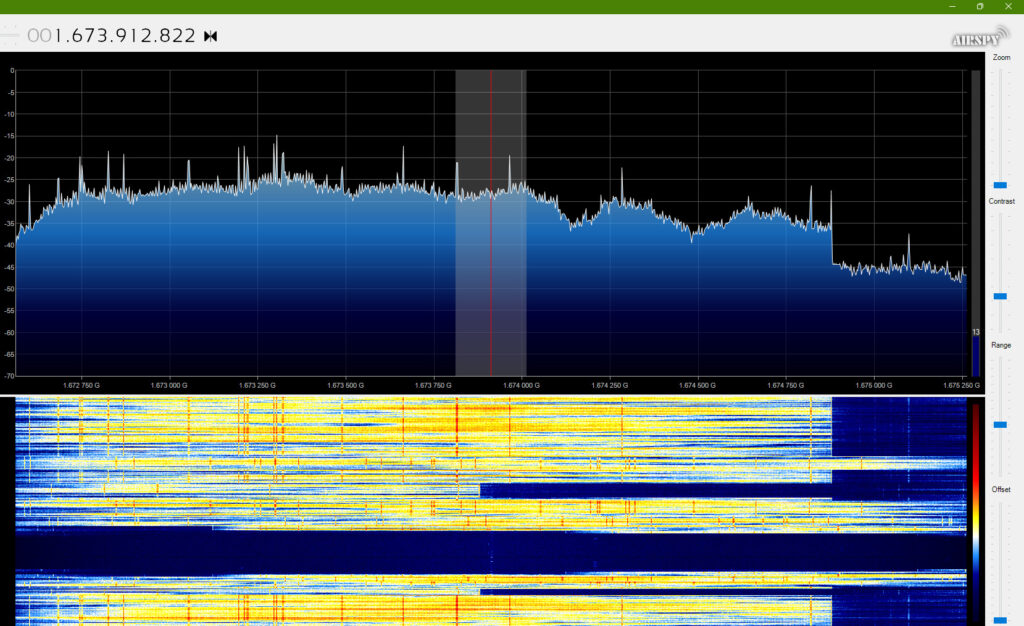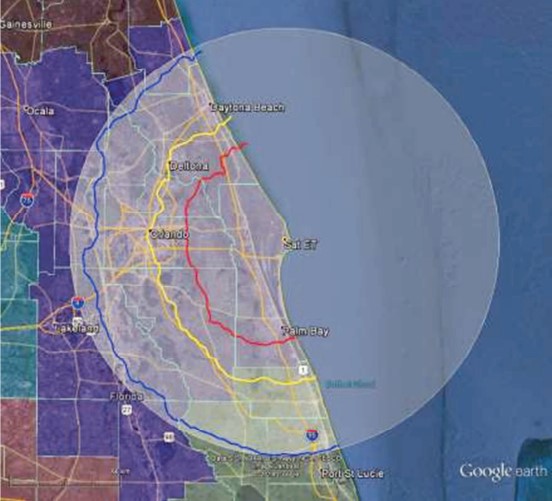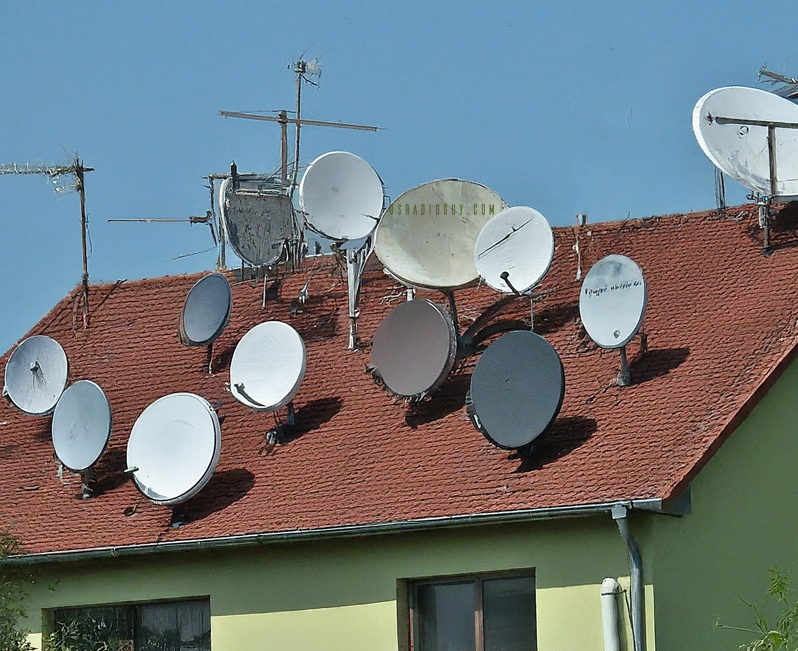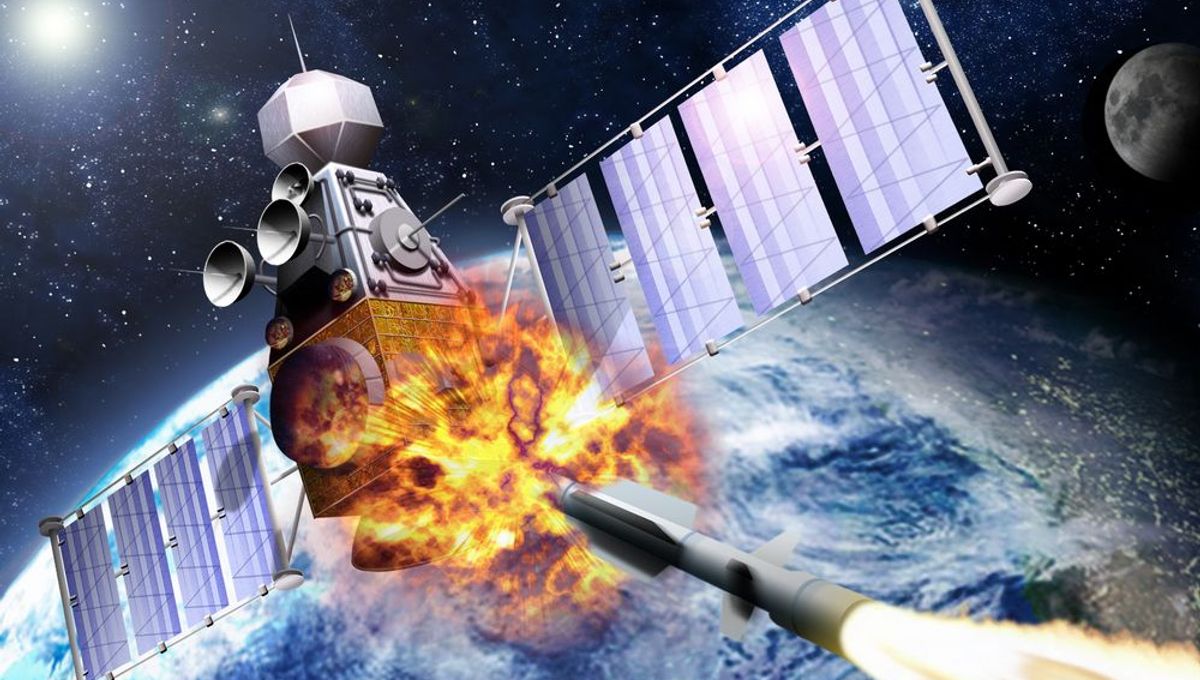![]()
UPDATED 05-04-2022
Electromagnetic interference (EMI) refers to the disruption of a system’s operation due to an electromagnetic field created by the same or another electronic system. EMI is common and can affect any electronic system. The fifth generation of mobile technologies (5G) is no exception. 4G and 5G deployments can cause serious EMI issues too, as was demonstrated recently in the U.S. when CEOs from major airlines warned that deploying the new 5G spectrum could cause catastrophic flight disruption across the country.
How the expanding AWS-1-3 band rollout affects HRIT/GRB and HRPT reception.
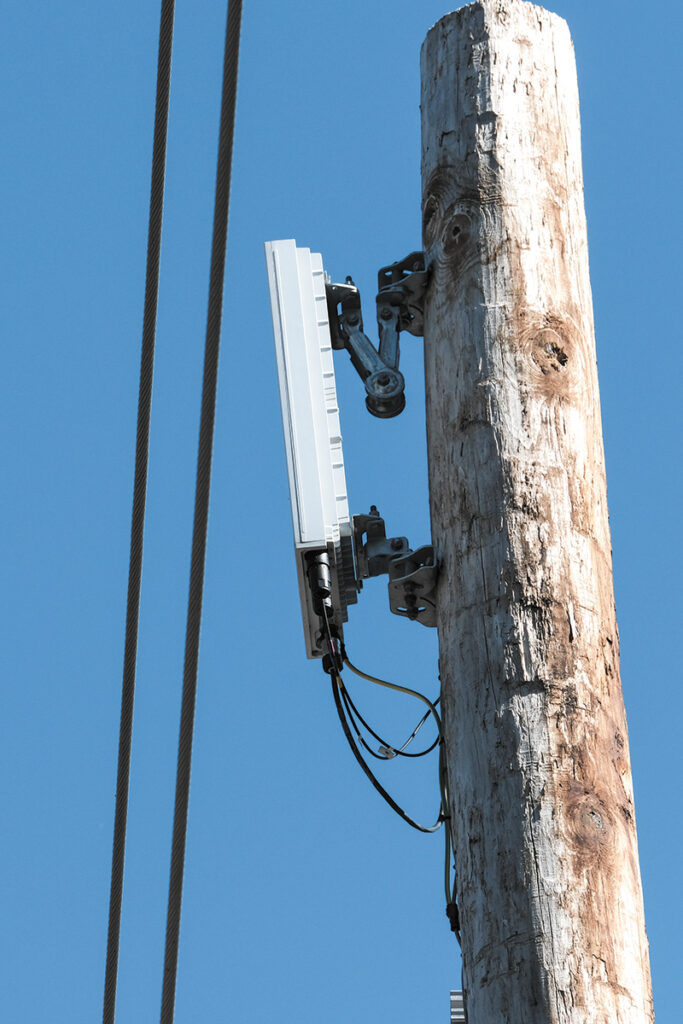
While the main 4G and 5G frequency is above the band that most Geo Stationary satellites like GOES-R series use, the issues that arise are the AWS-1 and 3 Bands that allows towers to talk to and from smart cell phones, act as repeaters, and are used to ‘fix’ areas that have poor cell coverage. They use a band plan called Advanced Wireless Service, AWS is the term the FCC uses for radio communication services licensed in the bands listed under Part 27 of the FCC’s rules. The services provided by AWS licensees are limited only by the Fixed and Mobile allocations of the spectrum designated for AWS and the rules of the service that the Commission adopts for the bands to address interference matters.
The AWS-3 Spectrum
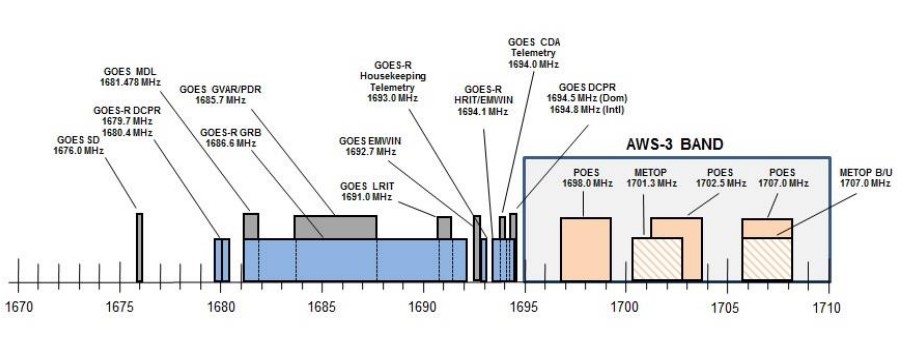
These spectrum bands are collectively known as AWS-3 which include the frequencies of 1695-1710 MHz, 1755-1780 MHz and 2155-2180 MHz bands (GOES-R HRIT is on 1694.1MHz). The AWS-3 Report and Order required that commercial operators successfully coordinate with Federal incumbents before operating in certain Protection Zones.
Additionally, there can be interference from Ligado Networks, formerly known as LightSquared, an American satellite communications company. Ligado Networks has 40 MHz of spectrum licenses in the nationwide block of 1500 MHz to 1700 MHz spectrum in the L-Band. With it, the company is developing a satellite-terrestrial network to support the emerging 5G market and Internet of Things applications. This company also operates the SkyTerra 1 satellite on an inclined orbit. 152 Transponders (L and Ku band) to provide 4G-LTE open wireless broadband network coverage to North America including Alaska, Hawaii, Puerto Rico, the Virgin Islands, Mexico and the Caribbean Basin. The 1670-75 MHz is a 5 MHz signal from Ligado and can be picked up with larger dishes and cause interference issues.
That’s great if you’re living in a protection zone like Suitland Maryland, Home of NOAA, or WCDAS in Wallops Island, VA, or the Table Mountain Test Range. But…..most of us are not Federal agencies operating in Protection Zones. This is such a problem that NOAA has scientists studying the interference with a project called RFIMS (Radio Frequency Interference Monitoring
System).
The towers are but one part of the Digital Infrastructure System, these are four sectors of digital infrastructure, including towers, data centers, fiber, and small cells & distributed antenna systems (DAS). AWS-3 can and is used in many of the DAS systems, so the receiver/transmitter might not be on a tower. I know in my small city, one of the big cell sites is on a City-owned water tower, and in the town where I work, a DAS is mounted to the back of a billboard near a shopping center.
As a way of describing by example of what this AWS-1-3 issue can cause, imagine you like to light up your backyard at night only with a 75 watt red light spotlight, your happy, your little yard looks like a scene from Red Mars. Then, unbeknownst to you, your neighbor installs on top of a tall telephone pole a 500-watt football stadium light that shines down 24/7, and on top of that, it flickers! So now you can only see your little red light shining during the times the neighbor’s stadium light flickers.
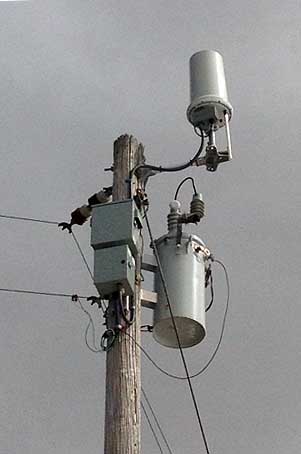
Now imagine the same scenario, except switch to radio frequencies, you are happily receiving GRB/HRIT, with very few drops, then BAM! the local mobile telecommunications company adds to the local cell tower an AWS-3 system to support the 5G network. Or, worse, they start installing mini AWS-3 repeaters all over the city you live in. The same effect, that powerful transmitter can overwhelm the capabilities of your receiving station. Drops begin to skyrocket, you start losing packets, your images have huge gaps in them…This is happening now to amateur receiving stations all over where AWS-1 and 3 is being deployed.
To make matters worse, most of these signals also come from UE, User Equipment, that’s right, your cell phone, or your neighbor’s phone could be wrecking your signal!!
But you may not be out of the woods yet, another looming concern is when Dish Network starts deploying its new network as their uplink band is 1695-1710 MHz. Dish was licensed to use Band 70 which combines three spectrum blocks encompassing DISH’s current AWS-4 spectrum as downlink (2000-2020 MHz), DISH’s H block downlink spectrum (1995-2000 MHz), and unpaired AWS-3 uplink spectrum (1695-1710 MHz). Dish, T-Mobile, Verizon, Amazon, and other telecoms are rushing to deploy SA, Stand Alone 5G network in this range. SA will also permit massive IoT on the network. The 5G core can support up to one million devices within a square kilometer, thousands more than what previous cellular standards could support.
Who Owns What?
The Towers themselves are typically not owned by the big three – Verizon, AT&T, and T-Mobile, rather they lease from the tower company, space, and services of the tower. The 3 biggest Tower Companies are American Tower, Crown Castle, and SBA Communications. Here is how they lease to the top three tenants.
American Tower
The company’s three largest tenants are AT&T (19% of revenues), T-Mobile (18% of revenues), and Verizon (14% of revenues).
Crown Castle
The company’s three largest tenants are T-Mobile (35% of revenues), AT&T (22% of revenues), and Verizon (18% of revenues).
SBA Communications
The company’s three largest tenants are T-Mobile (40% of revenues), AT&T (32% of revenues), and Verizon (19% of revenues).
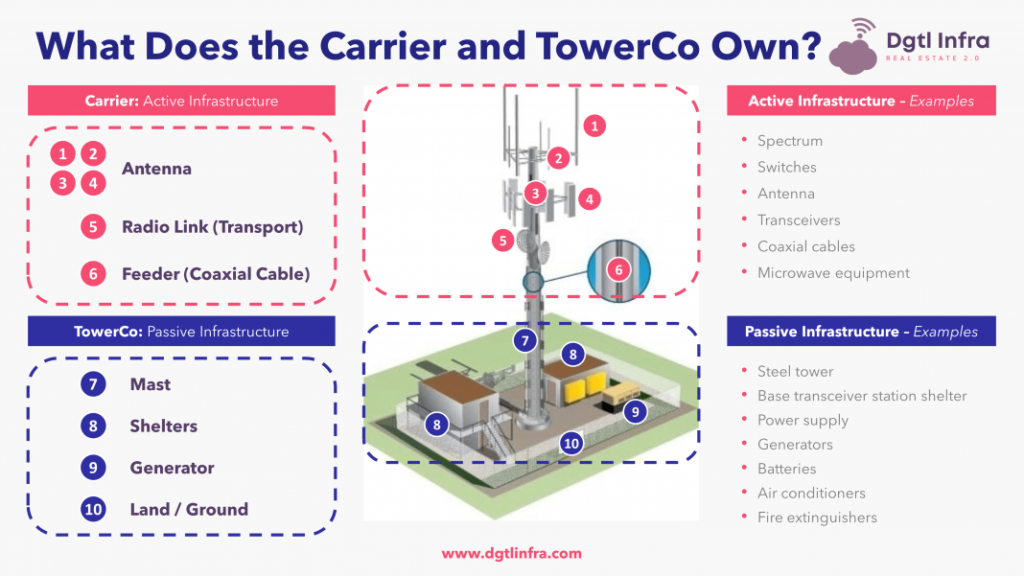
This is not just a problem for cities and urban areas, I have spoken to several folks who have had issues in big cities, large neighborhoods, and other urban areas. Surprisingly I got a message from a guy who has an APT and HRIT receiver in his backyard on his 600-acre farm in Oklahoma. He never thought he’d have an interference issue, but he did have one problem, being in the middle of nowhere he had virtually no cell phone coverage. So he called and wrote his cell phone carrier and complained, and they agreed to help! They came out and at their cost mounted a cell phone booster on the top of his grain silo. And, wait for it…. he could still receive APT, but those swirly interference lines appeared making the image terrible, and his HRIT failed altogether, while his vit average only increase by about 50 on average, he was getting 2000-4000 drops per day! So being the resourceful farmer/high tech engineer, he tried a test and shut off power to the grain elevator system. Instantly the drops disappeared and so did his cell phone signal. Unfortunately, he needed cell phone coverage for his business, so he has temporarily shut off his HRIT receiver. He has purchased the filters listed toward the end of this article, but being spring has not had the time to install them.
What can you do?
Well, first you should file a complaint with the FCC, unless of course, you are one of the forty-seven Federal earth stations that receive satellite signals in the 1675-1695 MHz
band on a primary basis and on a co-primary basis in the 1695-1710 MHz band and will continue to do so indefinitely, then you’re in a ‘Protection Zone’. I am assuming you’re not, so file a complaint with the FCC, go to this site https://consumercomplaints.fcc.gov/hc/en-us click on RADIO and fill it out with as much detail as you can, especially these points:
- When your problem first started
- The frequencies you receive on
- The impact to your system
- If you can find them, the locations of and the proximity to your receiver.
- Again, if you can find out the names of the cell tower operator.
- Ask to be notified of a resolution, ask for financial remediation from the cell company to pay to have them provide filters, LNA’s, new dish, etc. (The squeaky wheel gets the oil theory).
- Also ask to have the FCC send notifications to the cell companies in your area of your complaint.
What to do while you’re waiting for the FCC
Search for the towers in your area, take a drive, ride your bike, take a walk. Look for an identification plate on the tower, the pole, the fence, or the building. Do not enter any area owned by the company- that’s a crime, and I don’t think you can set up a satellite station in a Federal Penitentiary. Then, if you find the information, use the list below and contact them, ask to speak to an engineer, and that you are calling about EMI interference from their equipment OR the carrier that is leasing space on that tower and that it is impacting your ability to receive satellite weather data. Have the following ready:
- When your problem first started
- The frequencies you receive on
- The impact to your system
- The addresses or tower numbers of the towers you think are impacting your receiver.
- Send them a map of the tower(s) in question and your rigs location.
- Specifically mention interference from AWS-3 bands (it may be that the tower you think is causing the issue, is not in fact the problem.)
Use this list of 131 Companies – Note that many of these are international as well.
Use this site to help you find towers in your area
Cellmapper.net You’ll have to do some digging, but it can provide a lot of info, but a lot of those small neighborhood spots are not always added.
Another great tool is https://www.antennasearch.com/ This is a very detailed list and its nice, because it provides a map, and when you find an antenna in your area, you can click on it and it will populate a google earth map of the tower!
Want to see maps of AWS-3 coverage?
This is a bit staggering-
The FCC said bidding in the AWS-3 spectrum auction, known as auction 97, closed after 341 rounds of bidding. Total provisional winning bids came in at a record $44.899 BILLION. That’s far more money than the FCC raised in its previous spectrum auctions.
The FCC set a reserve price on the auction of around $10 billion. Analysts had predicted that the auction would raise anywhere from $10 billion to $20 billion. But the event has raised far more than anyone in the industry expected. And because of this, basically, the entire country is one big AWS-3 blocked-up map. This involved 65 MHz of the spectrum which would mostly be used by AT&T, Verizon and T-Mobile.
Google Image search for AWS-3 Maps from many band owners…
What can you do to filter out the AWS-3 interference.
If the FCC and/or the telecoms do not, or can not help you can try to filter…
There are some products that can be added to a receiving station to help and/or alleviate the AWS-3 band interference.
While many, many of us use the Nooelec GOES+ Sawbird for our systems, for GOES/LRIT/HRIT/HRPT Applications. it has a center frequency of 1688MHz so it will filter out most signals on either side of the center, but those lower-end AWS-1 frequencies can and do still get in.
You can get a specialized filter for AWS-3 bands, but they are intended for commercial use and are very expensive. There is however a low-cost way of adding additional filtering to your receiving station.
This involves trying them individually, starting with the VBFZ-1690-S+ (which might be enough all by itself), or in pairs, or all three by ‘stacking’ several filters from the company Mini-Circuits inline BEFORE the Sawbird+.
- VHF-1320+ LTCC High Pass Filter, 1700 – 3800 MHz
- VBFZ-1690-S+ Connectorized Band Pass Filter, 1455-1925 MHz
- Vlfg-1700+ LTCC Low Pass Filter, DC – 1700 MHz
Hopefully, you are not affected…yet… but if you are, or you will be – Good Luck!

